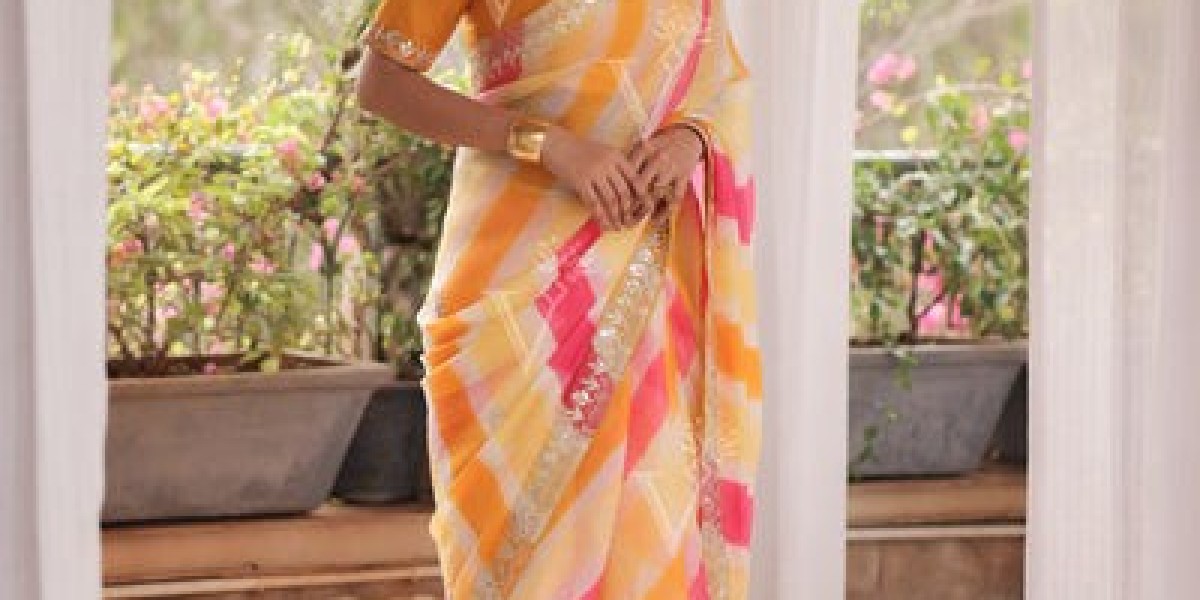The Jaipuri saree embodies the rich cultural heritage of Rajasthan's Pink City, representing centuries of artistic excellence and royal patronage. These exquisite drapes showcase the finest traditional techniques from Jaipur, including intricate block printing, vibrant bandhani work, and delicate hand embroidery that have made this region famous worldwide for its textile artistry.
The Royal Legacy of Jaipuri Textiles
Jaipur's textile tradition dates back to the Mughal era, when skilled artisans created magnificent fabrics for royal courts. The city's strategic location on ancient trade routes facilitated the exchange of techniques and materials, resulting in the unique artistic style that defines Jaipuri sarees today.
The patronage of Rajput rulers and Mughal emperors fostered an environment where textile arts flourished. Artisans developed sophisticated techniques for block printing, natural dyeing, and decorative embellishment that continue to influence Jaipuri saree design today. This royal heritage is evident in every piece, from the intricate patterns to the rich color palettes.
Vasansi, with its deep roots in Jaipur's textile tradition, continues this legacy by working with skilled artisans who have inherited these techniques through generations. Our Jaipuri saree collection represents the finest examples of this ancient craft, combining traditional methods with contemporary design sensibilities.
Traditional Techniques in Jaipuri Sarees
Block printing forms the cornerstone of Jaipuri saree artistry. Skilled craftsmen carve intricate designs into wooden blocks, which are then used to create repeated patterns on fabric. This hand-printing process requires exceptional precision and artistic vision, as each block must be perfectly aligned to create seamless designs.
The most renowned block printing styles include Sanganeri prints, characterized by delicate floral motifs and fine lines, and Bagru prints, known for their bold geometric patterns and natural color palettes. These techniques use vegetable dyes and natural mordants, ensuring both environmental sustainability and fabric longevity.
Bandhani work represents another significant aspect of Jaipuri saree artistry. This tie-and-dye technique involves tying thousands of tiny knots in specific patterns before dyeing, creating distinctive dotted designs. The skill required to create perfect bandhani patterns has been passed down through generations, with master craftsmen capable of producing incredibly intricate designs.
Distinctive Features of Jaipuri Sarees
Jaipuri sarees are distinguished by their unique combination of traditional motifs and vibrant colors. Paisley patterns, floral designs, and geometric motifs are commonly featured, often combined in complex arrangements that showcase the artisan's creativity and skill.
Color palettes in Jaipuri sarees reflect the region's vibrant culture and natural beauty. Deep indigos, rich reds, sunny yellows, and emerald greens create stunning combinations that capture the essence of Rajasthan's landscape. These colors are often enhanced by metallic accents, adding a touch of luxury and sophistication.
Fabric choices for Jaipuri sarees include pure cotton for everyday wear, silk for special occasions, and blended materials that combine comfort with elegance. Each fabric type requires specific printing and dyeing techniques, demonstrating the artisans' versatility and expertise.
Types of Jaipuri Sarees
Hand-block printed cotton sarees represent the most traditional form of Jaipuri textiles. These pieces feature intricate patterns created using wooden blocks, with each print requiring multiple applications to achieve the desired complexity. The result is a saree that combines artistic beauty with everyday wearability.
Bandhani Jaipuri sarees showcase the region's expertise in tie-and-dye techniques. These pieces feature distinctive dotted patterns in various sizes and arrangements, creating visual textures that are both traditional and contemporary. The labor-intensive process ensures each saree is unique.
Gota patti Jaipuri sarees incorporate metallic ribbon work, adding sparkle and glamour to traditional designs. This technique involves applying thin strips of gold or silver ribbon to create intricate patterns, often combined with other embellishments for maximum impact.
Ajrakh print sarees represent a sophisticated form of block printing involving multiple stages of dyeing and printing. These pieces feature complex geometric patterns in deep, rich colors that showcase the artisan's technical expertise and artistic vision.
Styling Jaipuri Sarees for Different Occasions
The versatility of Jaipuri sarees makes them suitable for various occasions with appropriate styling choices. Casual wear calls for simple cotton prints paired with minimal jewelry, creating comfortable yet elegant everyday looks. These pieces work beautifully for office wear, lunch dates, or casual social gatherings.
Festival celebrations provide opportunities to showcase more elaborate Jaipuri sarees with bandhani work or gota patti embellishments. These pieces pair beautifully with traditional jewelry, creating authentic looks that honor cultural traditions while expressing personal style.
Special occasions such as weddings, anniversaries, or cultural events call for silk Jaipuri sarees with intricate block prints or heavy embellishments. These pieces create stunning formal looks that command attention while maintaining elegance and sophistication.
The Vasansi Jaipuri Collection
Vasansi offers an exceptional range of Jaipuri sarees that showcase the finest examples of traditional craftsmanship. Our collection features pieces created by master artisans who have dedicated their lives to preserving and perfecting these ancient techniques.
Each saree in our collection undergoes careful quality control to ensure authentic craftsmanship, color consistency, and fabric durability. We work exclusively with artisans who understand the cultural significance of their work, ensuring that every piece reflects the true spirit of Jaipuri textile artistry.
Our commitment to authenticity extends to our sourcing practices, as we work directly with craftsmen in Jaipur and surrounding areas. This approach ensures fair compensation for artisans while maintaining the highest quality standards for our customers.
Caring for Your Jaipuri Saree
Proper care ensures your Jaipuri saree maintains its beauty and cultural significance for years to come. Hand washing in cold water with mild detergent is recommended to preserve natural dyes and fabric integrity. Avoid harsh chemicals that can damage delicate block prints or bandhani work.
Drying should be done in shade to prevent color fading, as direct sunlight can cause natural dyes to deteriorate. When ironing, use moderate heat and consider placing a thin cloth between the iron and the saree to protect delicate prints.
Storage requires attention to prevent color bleeding and fabric damage. Wrap the saree in muslin cloth and store in a cool, dry place. Avoid plastic bags, which can trap moisture and cause mildew or fabric deterioration.
The Cultural Significance of Jaipuri Sarees
Jaipuri sarees represent more than fashion—they embody cultural identity and artistic heritage. Each piece tells the story of skilled artisans, traditional techniques, and cultural values that have been preserved through generations. Wearing a Jaipuri saree connects the wearer to this rich heritage while supporting traditional crafts.
The global appreciation for Jaipuri sarees has helped preserve these ancient techniques, providing sustainable livelihoods for craftsmen and their families. By choosing authentic Jaipuri sarees from Vasansi, customers contribute to the continuation of this beautiful tradition.
Modern Adaptations and Contemporary Appeal
Contemporary designers have embraced Jaipuri textile techniques, creating modern interpretations that appeal to global audiences while honoring traditional craftsmanship. These innovations include contemporary color palettes, modern silhouettes, and fusion designs that combine traditional techniques with contemporary aesthetics.
The adaptability of Jaipuri textile techniques ensures their continued relevance in modern fashion, while their cultural significance provides depth and meaning that transcends mere style. This combination makes Jaipuri sarees timeless pieces that will remain relevant for future generations.
The Jaipuri saree stands as a testament to India's rich textile heritage, offering wearers the opportunity to embrace tradition while expressing contemporary style. At Vasansi, we're committed to preserving this beautiful craft, ensuring that every Jaipuri saree reflects the skill, creativity, and cultural pride of Jaipur's master artisans.







